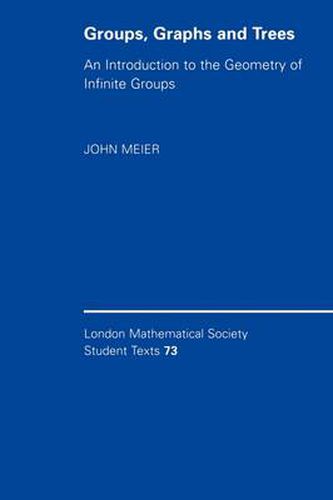Readings Newsletter
Become a Readings Member to make your shopping experience even easier.
Sign in or sign up for free!
You’re not far away from qualifying for FREE standard shipping within Australia
You’ve qualified for FREE standard shipping within Australia
The cart is loading…






Presenting groups in a formal, abstract algebraic manner is both useful and powerful, yet it avoids a fascinating geometric perspective on group theory - which is also useful and powerful, particularly in the study of infinite groups. This book presents the modern, geometric approach to group theory, in an accessible and engaging approach to the subject. Topics include group actions, the construction of Cayley graphs, and connections to formal language theory and geometry. Theorems are balanced by specific examples such as Baumslag-Solitar groups, the Lamplighter group and Thompson’s group. Only exposure to undergraduate-level abstract algebra is presumed, and from that base the core techniques and theorems are developed and recent research is explored. Exercises and figures throughout the text encourage the development of geometric intuition. Ideal for advanced undergraduates looking to deepen their understanding of groups, this book will also be of interest to graduate students and researchers as a gentle introduction to geometric group theory.
$9.00 standard shipping within Australia
FREE standard shipping within Australia for orders over $100.00
Express & International shipping calculated at checkout
Presenting groups in a formal, abstract algebraic manner is both useful and powerful, yet it avoids a fascinating geometric perspective on group theory - which is also useful and powerful, particularly in the study of infinite groups. This book presents the modern, geometric approach to group theory, in an accessible and engaging approach to the subject. Topics include group actions, the construction of Cayley graphs, and connections to formal language theory and geometry. Theorems are balanced by specific examples such as Baumslag-Solitar groups, the Lamplighter group and Thompson’s group. Only exposure to undergraduate-level abstract algebra is presumed, and from that base the core techniques and theorems are developed and recent research is explored. Exercises and figures throughout the text encourage the development of geometric intuition. Ideal for advanced undergraduates looking to deepen their understanding of groups, this book will also be of interest to graduate students and researchers as a gentle introduction to geometric group theory.